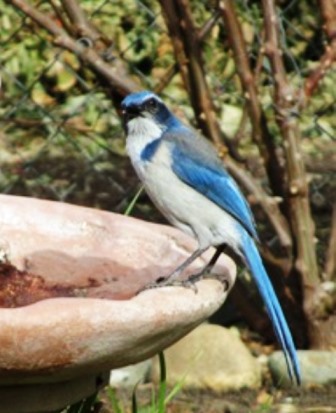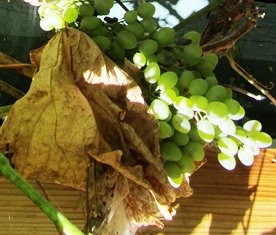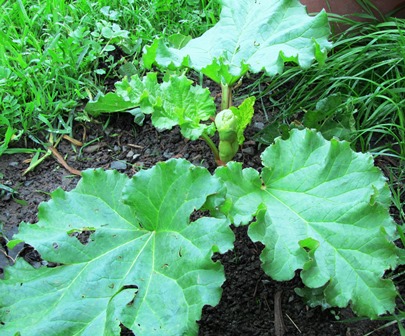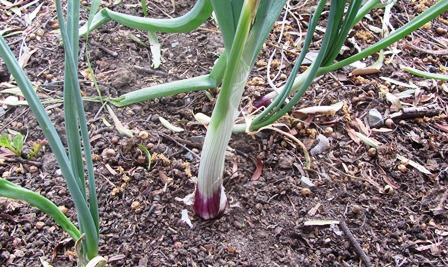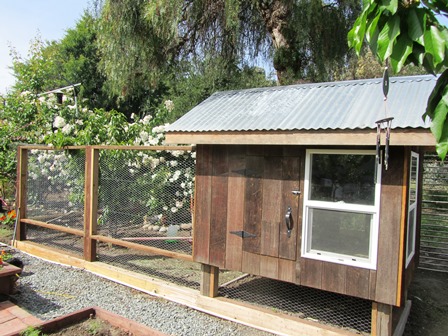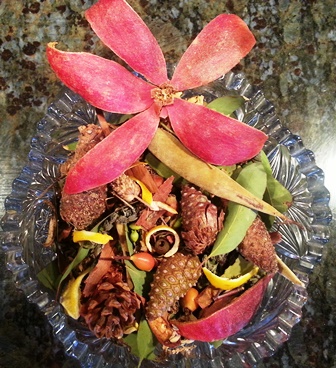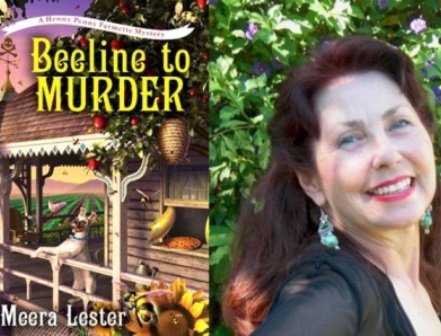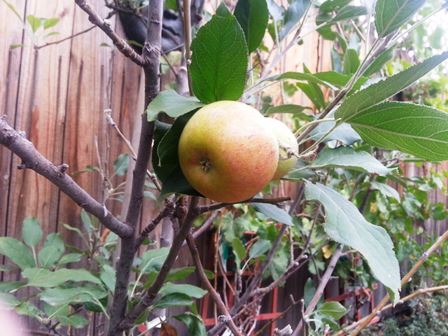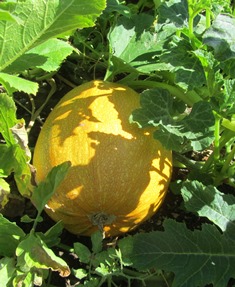Archive for the 'Gardening' Category
Heirloom Herbs for the Kitchen
The green stalks of the red and yellow onions I planted in late summer are now up about a foot in a raised bed. The garlic that I planted around the same time is also poking up. Having onions, garlic, and fresh culinary herbs available year-round is not impossible in the Bay Area’s mild climate, especially when they are grown in cold frames, protected areas, and raised beds.
Some will re-seed themselves in the growing beds or around your yards. We’ve got Greek oregano and chives growing all over the place. Some of my favorites herbs include basil, cilantro, chervil, chives, dill, fennel, lemon balm, lavender, oregano, mint, marjoram, rosemary, thyme, parsley, sage, and savory.
We also grow a few ornamental herbs such as borage, hyssop, and catnip (for our new kitty), tea herbs (chamomile and mint), and medicinal herbs (like echinacea).
Herbs are easy to grow. Their blooms will attract insects beneficial to the garden. Butterflies and hummingbirds are also attracted. And herbs don’t need much–light, and porous soil, warmth, and decent drainage. For a light feeding of the herbs, we make chicken poop tea. With so many varieties of herbs available, why not tuck a few in your garden or in containers in a protected but sunny and warm area of your patio to enjoy in your culinary creations?
How We’re Turning a Bedroom into an Office/Guest Room
Our farmette house has a small bedroom that we’ve always intended to reconfigure into an office where I can have more space to write my books. Since we borrowed some space for our master bedroom walk-in closet, the other bedroom (already small) lost two more feet. The new reconfiguration meant erecting two new walls and a closet.
New walls, after framing and hanging the drywall to create them, must have the seams taped, holes filled, and drywall screws covered. That was done around Thanksgiving. Since then, it’s taken us several weeks to apply the joint compound plaster, letting each coat dry for 24 hours before we apply the next. We only work when we can find an hour or two free after our other work obligations.
While I’ve been mixing and applying small batches of the stuff that reminds me of pancake batter, my husband does it like a pro–mixing large batches in a five-gallon can. He’s also much faster and neater with the application process. I was doing the ceiling of the bathroom and got huge gobs of it in my hair. But already, I feel the energy of the room has shifted. It’s light and bright and clean. The space is neatly defined.
Before we can choose base boards and crown molding or the electrical materials for lighting, we still have to go through the sanding, cleanup, and priming for paint. We’ve decided to build bookcases, a built-in desk with good lighting over it, and a Murphy bed (so the room can double as a guestroom, when necessary) to maximize the space.
I love home renovation projects, and this office/guest room for the New Year is no exception. It’s taken a lot of patience. That noted, the payoff will be worth every minute we’ve spent on it.
For more tips on farmette projects, crafts, and delicious recipes, check out my newest mystery. It’s available on Amazon.com, Barnesandnoble.com, and other online and traditional bookstores everywhere.

Fingers Crossed for the Biggest Storm This Year (So Far)
While others worry about getting sand bags in the event of rising storm water, my hubby and I went to the DIY store to buy some drywall early today. We are working hard on the small bedroom in our little house. Getting the drywall inside before the rain arrives was a priority. I’ll be so disappointed if the storm doesn’t bring rain to the Bay Area.

Last year, rain pooled in places around our property (among them, the driveway) because we hadn’t finished putting loads of gravel down
We have a decent gravel driveway that we finally put in. Flooding hasn’t been a problem. Our chickens don’t mind the rain either. Instead of huddling together in their dry little designer chicken house, they prefer looking for the worms and bugs that show up during and after a storm.
Also, I’ve been tapping away on my computer keyboard, pounding out my latest mystery-in-progress. I had a pretty good idea come to me after I woke up this morning. That means my mind is working creatively even when I’m not typing words. I’m plotting and visualizing scenes and scenarios, making linkage and associations. This novel will be number three in my Henny Penny Farmette series, and I’m pretty excited about it.
While the work continues on the house and on my book, I’m also getting ready make up holiday baskets for family and friends, searching for lovely boxes, baskets, and cookie tins.
But I think that if this big storm that’s been forecast to arrive in the wee hours of the morning does arrive on schedule, I’ll spend an extra hour in bed tomorrow. I love sleeping in when a storm is howling outside my window. Sleep and rest nourish my little gray cells, too, meaning I might be more prolific at writing, carpentry, and crafting. So bring on the storm.
Black Friday Alternatives
I suppose I just didn’t get the shopping gene in my DNA. So while everyone else shops the Black Friday specials, I’ll be doing repairs on a room of our farmhouse. The second bedroom doesn’t yet have the windows completely framed, joint compound and tape on the seams, or plaster on the walls.
It would have been lovely to sleep longer today–this day after Thanksgiving–but our newly adopted cat woke me early. I made coffee and plucked navel oranges from the tree to put into the juicer. After a bagel, coffee, and a glass of juice, I mentally ticked off a list of things I wanted to do today. And I’d get right on those tasks after I watched the sun rise and observed the wild birds foraging at the feeders and the squirrels chasing each other along the fence.
Nature is so seductive, I could have just as easily forgotten my to-do list and stayed outside, enjoying the fresh air and the natural world. I think it’s a terrific idea that many parks in California are waiving fees today to offer individuals and families the option of enjoying nature instead of shopping.
As for shopping, I think life could be much simpler if we just ask a question or two before purchasing: Do I really need it; or, do I just want it? For myself, or someone else?
I know the gift-giving holidays are weeks away. The season of sellers bombarding consumers with “buy” messages is upon us. Call me old-fashioned or blame it on my Midwestern farm-family upbringing, but I prefer to give and receive the gifts of self. Something homemade with love, if possible. Or the gift of time . . . extra hands to help me plant bulbs, put up blood orange jam, paint a room, or pluck eucalyptus leaves to make a holiday wreath.
What do people remember about shopping together? On the other hand, time spent with a friend, a child, or grandchild making a gift or doing something nice for someone can strengthen the bonds of love.
But back to my Friday punch list. I’ve checked my supplies for the day, and it looks like I’m out of Spackle. Arghh! I’ll have to go buy some. But this won’t be an impulse buy–it’s not something I want . . . it’s something I need to finish the job at hand. Enough said.
If you do love shopping and also enjoy reading, check out A BEELINE TO MURDER. See, http://tinyurl.com/p8d6owd
Gardening Tasks for Late Autumn
Falling leaves, shorter days, and colder weather signal that winter is around the corner. With roughly a month left before winter officially begins, there are plenty of tasks for the home gardener. Don’t put away your boots, buckets, gloves, trowel, and spade just yet.
If you grow grapes and raspberries or blackberries, now would be the time to prune those back before mulching with compost, leaves, or sawdust. Composting suppresses weed growth.
Pick and pumpkins, apples, and winter squash. Store them in a dry area at temperature of about 50 degrees Fahrenheit.
Rhubarb plants can be divided now. Make sure there’s an eye on each new plant and tuck into rich soil and mulch.
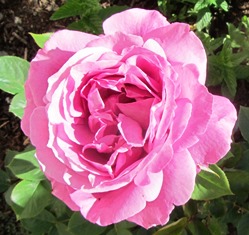
This candy-stripe rose requires a good pruning in the fall to generate a large bush with beautiful blooms in the spring
Remove leaves and prune back roses to 12 to 18 inches. Add some bone meal to the base of the bush and work into the soil.
Plant bulbs that will flower in the spring such as daffodils, tulips, hyacinth, crocus, and scillas.
Prepare a bed for onion seedlings or sets and plant them now for spring harvesting.
Fill bird feeders, hang a warming light in your hen house for the freezing nights ahead, and put blankets around your bee hives.
Transfer potted mums into garden soil. Most are perennials and will return year after year.
Plant kale, ornamental cabbage, and winter-hardy plants such as pansies in the garden or window boxes for winter color.
Move cold-sensitive houseplants indoors.
Tis the Season to Plant Bulbs for Spring/Summer Bloom
- These fragrant lilies return every year and bloom mid-summer
After the recent rainstorm, I walked around my farmette and noticed small slivers of green sprouting up. They seemed to be everywhere.
I could understand the grass coming back, but the sight of summer-blooming lilies shooting through the soil was quite surprising. The sight of them got me to thinking about planting some bulbs for a springtime bloom.

The bees are drawn to the sweet scent of narcissus that have naturalized in the yard and bloom in the spring
Over the weekend, I dug a bed for some tulips and planted nearly 100 bulbs–some early and others late-blooming.
I also will plant some sweetly fragrant grape hyacinth. The bees are attracted to the pollen because of the scent. Honeybees especially love foraging for pollen on violet-hued tulips.
Honeybees need to find pollen all through the year, so planting bulbs that bloom before the spring wildflowers makes sense for those of us who care about the bees.
For tips on farming, raising chickens, keeping honeybees, and creating farm crafts as well as having a good mystery to solve, check out my novel, A BEELINE TO MURDER. It’s available everywhere and also online at Amazon.com and barnesandnoble.com.

Blankets for Trees & Bees on Frosty Nights
I don’t like to take chances with my citrus trees when overnight temperatures drop to near freezing. I cover them with sheets and blankets.
My hives are in a wooden shelter with a tin roof and the back side open, so I can work without any encumbrance. But I don’t want the bees to have to work harder to keep the hive warm for the queen and babies, so I throw some blankets over my beehives, too.
Also, on particularly cold nights, I hang a warming lamp in my chicken house. My rule of thumb for my hens is when overnight temperatures are expected to drop below 45 degrees, I turn on the lamp so the hens aren’t stressed.
An advantage of hanging a heat lamp in the chicken house is to foster egg laying at time when shorter days of light slows egg production. The heat lamp makes light available to the chickens for a much longer period.
Easy Peasy Holiday Potpourri
Potpourri mixtures are easy to create and their long-lasting fragrance can add an attractive visual appeal and fresh scent to any room. You can find many items in nature. Use a festive basket or crystal bowl for displaying your potpourri.
Go on a nature walk to hunt for materials (see the List of Potpourri Items below).
Visit a shop for spices–whole nutmeg, cinnamon sticks, cloves, and allspice.
Cut or purchase herbs (preferably dried)–lavender, rosemary, and mint.
Combine nature’s materials with spices, dried herbs, and dried citrus slices and peels.
Add rose petals, lavender buds, and/or pinecones and red cedar bark.
Arrange pretty seashells or small pieces of driftwood.
Include fresh leaves and berries from eucalyptus trees and also he fuzzy seed pods of wisteria.
Put the potpourri in a pretty basket or cut crystal bowl; add a drop or two of essential oil if desired.
LIST OF POTPOURRI ITEMS
Combine using any of the following to create interesting mixes, textures, and colors.
- pinecones
- eucalyptus leaves and berries
- rose hips
- citrus peels
- pomegranate peel
- lavender buds
- rosemary
- yarrow
- seed pods
- red cedar bark
- cinnamon sticks
- dried rose petals
- citrus slices
- allspice
- peppercorns
- dried nutmeg
- dried apple slices
- carnation petals
- seashells
- dried rose petals
- dried mint
- essential oil—(rose, lemon, lavender, vanilla) to intensify scent
Find other ideas for farm crafts and delicious recipes in A BEELINE TO MURDER.
Click here: http://tinyurl.com/nhdae39
Celebrating the Season of Apples
It’s that time of year when the scents of cinnamon and apple potpourri mingle with hot mulled cider. Thank you, Johnny Appleseed.
Or should I say, thank you, John Chapman (1174-1845). Born in Leominster, Massachusetts, Chapman planted apple orchards on lands in the northeastern and mid-western parts of the United States, returning after several years to sell those orchards after they were producing.
He also gave away many trees and seeds. But he didn’t believe in grafting, and the trees he planted bore apples more suited to cider. See, http://www.smithsonianmag.com/arts-culture/real-johnny-appleseed-brought-applesand-booze-american-frontier-180953263/?no-ist
It was John Chapman’s father Nathaniel–a farmer–who encouraged his son to become an orchardist. John planted more than a few orchards around the Midwest on lands he bought, owned, and sold. His life gave rise to the folk tradition of Johnny Appleseed. Today, there are many festivals that honor his life and work as well as a U. S. postage stamp.
Today, you don’t need a lot of land to grow an apple tree or two. Even a small piece of land can accommodate the fruit tree, thanks to the availability of dwarf and semi-dwarf varietals. Apartment dwellers and people who have limited space can even espalier an apple tree against a wall.
On the Henny Penny Farmette, we are growing the thin-skinned Cox Orange Pippin dessert apple, among others. This late-season varietal was first grown in 1825 in Colnbrook in Buckinghamshire, England. The flesh is orangey-red and the flavor is sweet and nutty. These apples can be eaten fresh, used in recipes, or made into cider.
If you have some cider on hand and would like to create the mulled apple cider flavor, add a couple of cinnamon sticks, a teaspoon each of whole cloves and allspice with a half-gallon of cider and heat in a saucepan. Add a little orange juice or some slices of orange. After simmering for 8 to 10 minutes, strain the mulled cider into mugs. Consider making a batch of farmhouse doughnuts to accompany the cider.
FARMHOUSE DOUGHNUTS
Ingredients:
1 pkg. yeast
1 cup lukewarm milk
1/2 teaspoon salt
31/2 cups flour
1/4 cup canola oil, plus oil for frying
1 cup brown sugar
2 eggs, well beaten
3/4 teaspoon nutmeg
Directions:
Mix together the yeast and milk in a small bowl.
Combine flour with salt in a large bowl.
Add the yeast and milk to the flour and salt mixture and beat well.
Let the mixture rise for one-half hour.
Add all the other ingredients and beat well again.
Let rise for one hour.
Punch down the dough. If it appears too soft to roll out, add more flour.
Turn the dough out onto a well-floured board and let the dough rest for ten minutes.
Divide the dough in half. Roll one section of dough out to 1/2 inch thickness and cut with a doughnut cutter. Repeat the process for the other half of the dough.
Let the doughnuts rise for about an hour; fry in oil at 360 degrees Fahrenheit. When the doughnut has turned brown, flip over. Take care not to burn.
Remove from doughnuts from hot oil and drain on paper towels.
Place doughnuts in a bag with granulated sugar and shake to coat. Makes approximately two dozen doughnuts and holes.
Visit a Farm in the Fall For a U-Pick Experience
The Henny Penny Farmette is about a half hour away from Brentwood. There are at least fifty farms in and around Brentwood that offer families a U-Pick experience. The city is located in the eastern region of the San Francisco Bay Area.
Although Brentwood has had a post office since 1878, the city today is largely residential. That said, there are many actively producing farms and preserved lands around the pockets of community. The area has a semi-arid, Mediterranean climate and is situated on the alluvial plain of the Sacramento-San Joaquin Delta.
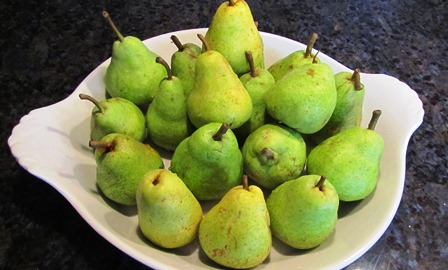
To bring out the maximum sweetness of pears, place them in a paper bag for two days in a kitchen cupboard
Many of the farms permit family picking of produce and tree crops. Some of the crops available for picking through October include apples, corn, figs, green beans, onions, peppers, pears, persimmons, pomegranates, pumpkins, squash, strawberries, and tomatoes. Additionally, walnuts, pistachios, and almonds are available year-round at some of the farm stands. There are also wineries and vineyards in the region.
As you drive around the area, look for a Brentwood Harvest Time sign as an indicator for a farm. There will be a number on the sign that coordinates to a name of a farm with that same number on a handily map that you can get at http://www.harvest4you.com. In July, the city hosts a harvest festival for the entire family. It features tractor rides and corn shucking and eating contests, among other activities.
Finally, if Christmas at your house wouldn’t be the same without a live tree, you can find Christmas tree farms in and around Brentwood as well on the Harvest4you.com website. Check it out.
U-pick guidelines as listed on the map include the following rules.
1. No climbing or damaging trees
2. Children are not allowed on ladders.
3. You must buy what you pick.
4. Check produce for ripeness before picking it.
5. Do not throw fruit.
6. Do not litter.
 Facebook
Facebook Goodreads
Goodreads LinkedIn
LinkedIn Meera Lester
Meera Lester Twitter
Twitter











